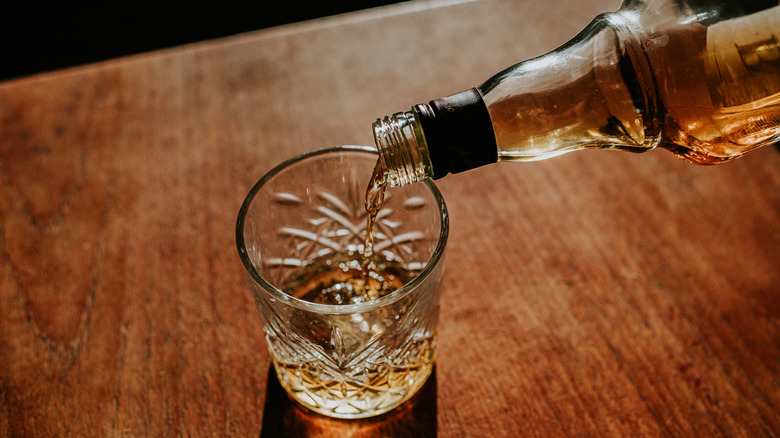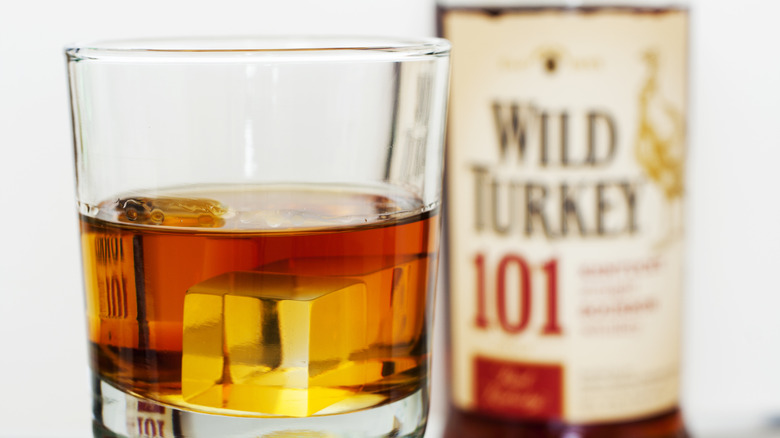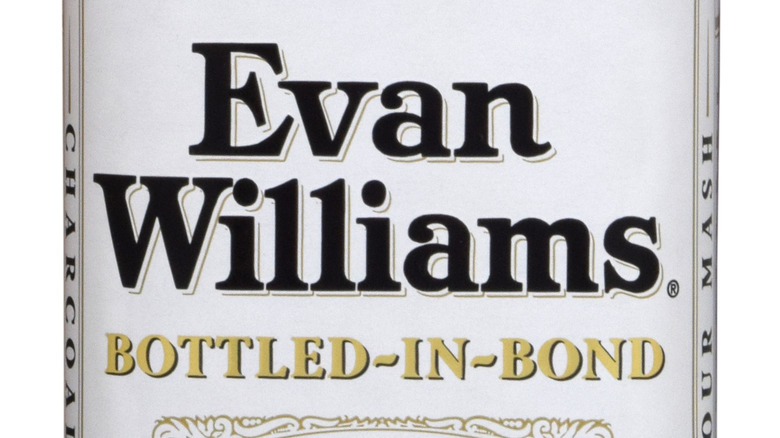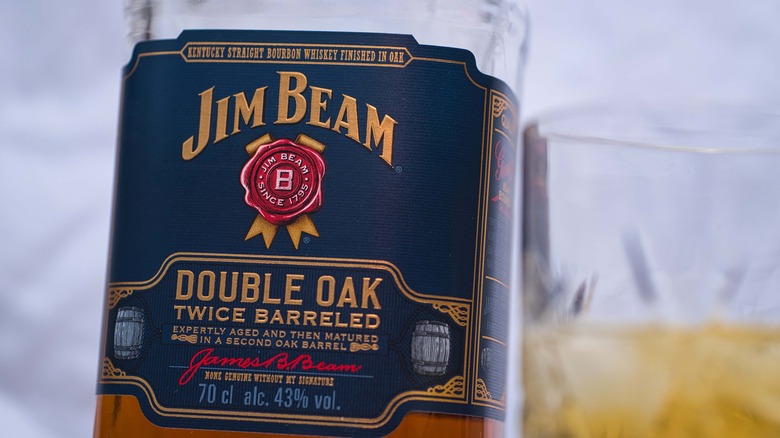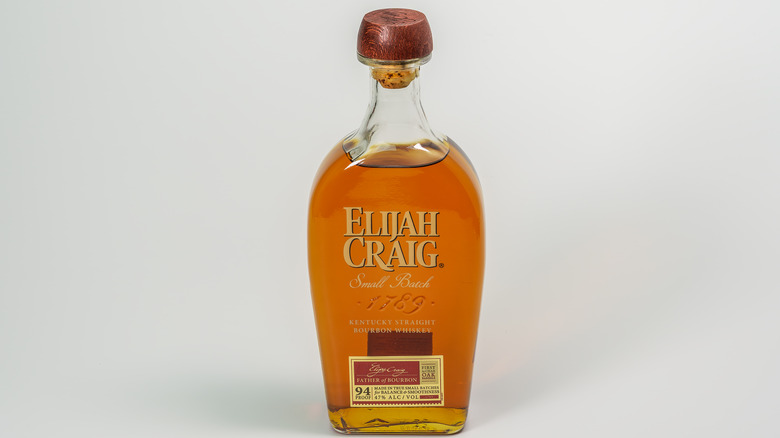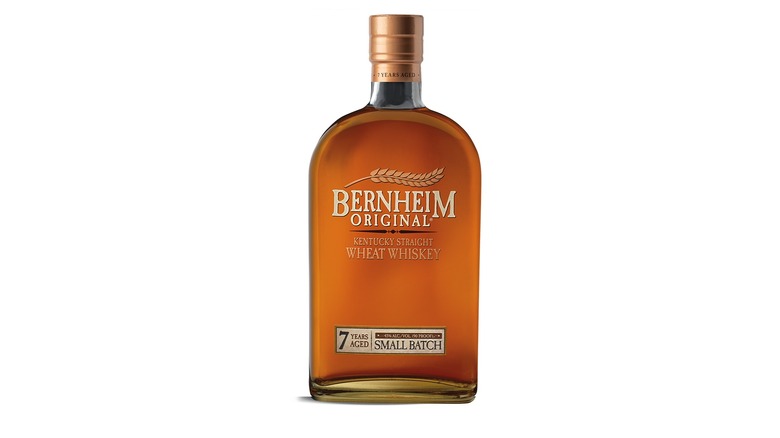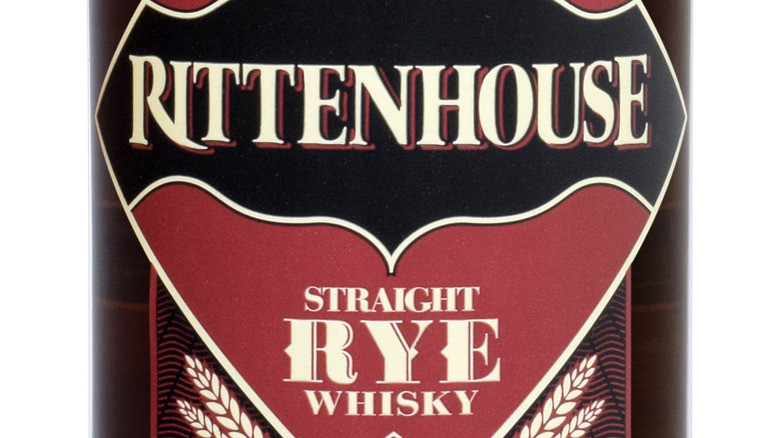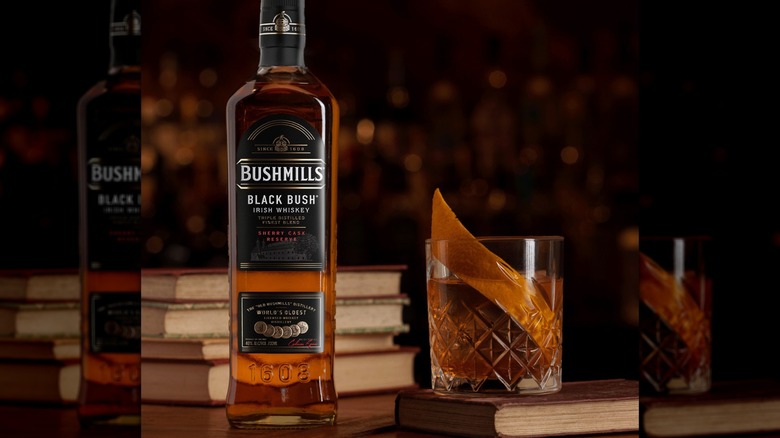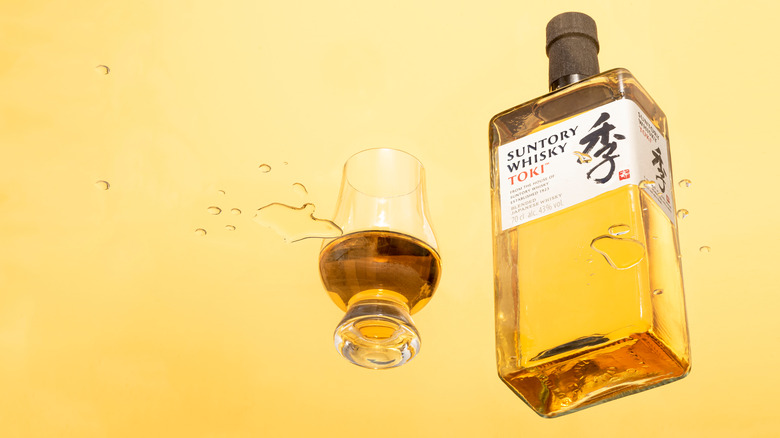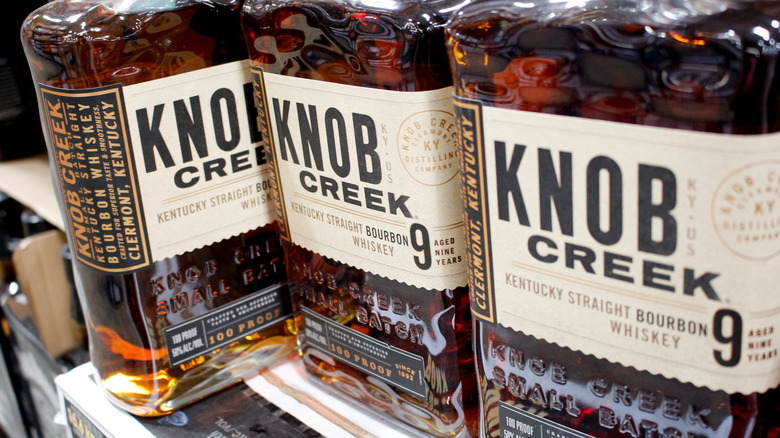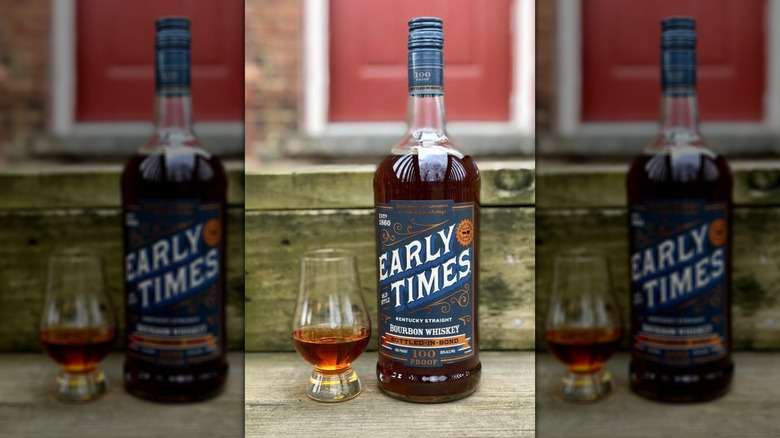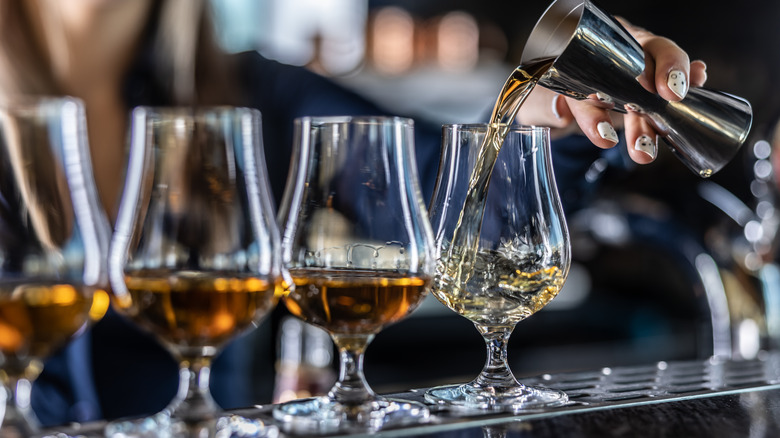Cheap Whiskey With Top Shelf Taste
Choosing a bottle of whiskey (which is different from whisky) can feel a bit daunting. Do we really need to drop $100 or more to get a quality bottle? And if we pick up a cheap bottle, will it even be drinkable? The marketing wants you to believe that good whiskey requires serious cash, but that's just not true. We'll show you some of the best whiskeys that you can get for under $35.
We dove deep into whiskey blogs, production methods, expert reviews, and countless Reddit threads to separate the real gems from the overhyped bottles. These bottles punch way above their weight class, delivering flavors and complexity that would make sense at twice the price.
The variety available at this price point spans the entire whiskey world. From Kentucky distilleries using government-certified bottled-in-bond standards to Japanese masters blending whiskies from multiple distilleries. Whether you're a whiskey newcomer looking for quality starting points or an experienced drinker hunting for exceptional value. You'll discover some new favorites that become regular shelf staples while keeping more money in your pocket.
Wild Turkey 101
Wild Turkey 101 seems to be the top choice with whiskey drinkers when it comes to budget bottles. It was consistently brought up in blogs and reviews, and won top votes in every Reddit thread about the best cheap whiskey.
For over 75 years, Wild Turkey has been making 101 the same way. This bourbon is aged in American white oak barrels with what's called an "alligator char" — basically, they char the inside so deeply it looks like alligator skin. This intense charring caramelizes the wood sugars and creates those rich flavors that make people keep coming back to this bottle.
The high rye content gives Wild Turkey 101 a spicy backbone, while that 101 proof (hence the name) means it has serious character. You'll get caramel and vanilla notes from all that charring, plus lemon notes and warm spice that builds to a smoky finish. The 101 is aged for a minimum of six years, which creates a bourbon that's flavorful and versatile enough to handle whatever you throw at it. It's perfect neat or on the rocks, but also shines in cocktails as that higher proof means the flavor doesn't get lost when you add mixers — your old fashioned will actually taste like whiskey, not just sweet syrup.
Evan Williams Bottled in Bond
Evan Williams, which started on the banks of the Ohio River, has been around since 1783, making it one of the oldest names in bourbon. This bottled-in-bond bourbon uses the sour mash process that honors that early tradition. Bottled-in-Bond is a special legal designation for American whiskey created by the Bottled-in-Bond Act of 1897 to guarantee the whiskey's authenticity, purity, and consistency under federal government supervision.
The whiskey must be produced by one distiller at one distillery during a single distillation season. This ensures the whiskey comes from a single, consistent batch rather than being blended from multiple sources. It must be aged for a minimum of four years and must be bottled at exactly 100 proof, or 50% alcohol by volume. This higher proof preserves the whiskey's full flavor and strength.
It also must be unadulterated, meaning no flavorings, colorings, or additives are allowed, except for the addition of pure water to adjust proof before bottling. The entire process — from distillation, aging, to bottling — is supervised by government supervision. This was originally designed to protect consumers from adulterated or fake whiskey, which was common in the late 1800s.
The flavor profile here is really well-balanced. It's a bright gold color in the glass with caramel and vanilla on the nose, plus hints of oak and barley. The taste delivers citrus over vanilla with a solid hit of black pepper, and it finishes warm, long, and dry. What makes this bourbon work so well is how it handles sweetness. It starts quite sweet, but the nutty, woody, spicy, and dark fruity notes keep everything in check.
Jim Bean Double Oak
Charred oak barrels give bourbon most of its flavor, so we appreciate that Jim Beam doubles down on exactly what makes bourbon taste great in the first place. This double-barrel process sounds like marketing speak, but there's actually smart science behind it that makes a real difference in your glass. During ageing the barrel extracts flavors at different rates. Sweet compounds like vanilla and caramel come out quickly, while harsher tannins take longer to develop. Extended aging eventually pulls those bitter notes that can overpower everything else.
Jim Beam found a better way. They take four-year-old bourbon that would normally become their white label and transfer it into a second new charred barrel. This grabs all those quickly dissolved sweet oak flavors without the harsh tannins that come from extended aging. Fresh wood means fresh extraction of all the good stuff.
It has an oaky, smoky smell. All the standard bourbon notes are there like caramel and vanilla, but the smoke dominates everything. The finish brings some sweetness and plenty of heat.This bourbon is for people who like their whiskey hot, smoky and intense. It's traditional bourbon with the volume cranked up in all the right directions.
Elijah Craig Small Batch
One bourbon newbie on Reddit put it perfectly after trying Elijah Craig for the first time: "It was transcendental. It felt like my culinary mind expanded another level. There was oak, vanilla and baking spices all rolled together with this warmth that I've never experienced in a spirit before!"
Elijah Craig small batch uses level three barrel charring, which creates the right balance for flavor development without letting char notes dominate everything else. Bourbon get's most if it's flavor from the charring of the barrel that it is aged in. There are four levels — level one is charred for 15 seconds, where level four is known as alligator charring and can be anything over 55 seconds. Elijah Craig hits the sweet spot with level 3 for 35 seconds. The charred surface acts as a natural filter while breaking down wood compounds into the sugars that give you those caramel and vanilla flavors.
The bourbon has a burnished copper color and greets you with vanilla bean and sweet fruit on the nose. The taste delivers smooth and warm flavors with pleasant woody notes plus spice, smoke, and nutmeg. The finish runs long, sweet, and slightly toasty, giving you exactly the kind of complexity that makes people fall for bourbon.
The Reddit reviwer captured what makes this bottle special. The oak, vanilla, and baking spices all work together with a warmth that separates good bourbon from forgettable bourbon. Elijah Craig Small Batch delivers the complete package at a price that won't make you think twice about pouring another glass.
Bernheim Wheat Whiskey
Wheat whiskey was America's original whiskey long before bourbon took over the country. Hundreds of distilleries in New York state alone made wheat whiskey, and it dominated American drinking culture until corn-based bourbon and rye whiskey pushed it aside. Finding wheat whiskey today takes some hunting. While rye whiskey has enjoyed a major comeback in recent years, wheat whiskey almost completely disappeared from American shelves. Heaven Hill's Bernheim Original is often the only wheat whiskey available in most liquor stores.
The difference comes down to grains. Bourbon requires at least 51% corn in the mash bill (the reciepe of grains used), while wheat whiskey flips that to 51% wheat. Bernheim uses winter wheat along with corn and malted barley, creating a softer, sweeter profile than traditional bourbon. That wheat gives the whiskey a gentler character that loses some of the structure you get from rye but gains approachable smoothness. This one smells of vanilla and spice, with a nutty, caramel taste.
This whiskey works for different types of drinkers. Newcomers to brown spirits will appreciate how smooth and mellow it tastes without harsh edges, while experienced whiskey drinkers get to explore a different grain profile. Some seasoned whiskey enthusiasts might find it too soft for their taste, but that's exactly what makes it special for others.
Rittenhouse Rye
Rittenhouse Rye might be one of the least expensive bottled-in-bond ryes on the planet, which is pretty amazing considering the quality. Heaven Hill distillery bottles this at 100 proof after aging it for four years, meeting all the strict bottled-in-bond requirements that guarantee quality and consistency. Rye requires at least 51% rye in the mash bill while bourbon needs 51% corn. Less corn and more rye creates a spicier flavor profile that is traditionally used in Manhattans.
This whiskey carries the distinct spicy flavor and mouth-coating oils that define good rye. It has a honeyed, licorice taste that handles itself well whether you sip it neat or mix it into cocktails. One Reddit user summed up why this bottle works so well: "A deliciously well rounded value whiskey. It's no wonder this bottle is an absolute cocktail staple, at 100 proof and with the rich flavor profile it stands up so well in cocktails but sips nicely too. Good stuff."
Bushmills Black Bush
Bushmills doesn't fit the typical Irish whiskey mold. While most people think of Jameson and Powers when it comes to Irish Whiskey, Bushmills does things a little differently. The distillery, located in Antrim, Northern Ireland, has been in operation since 1784, using water from the River Bush, hence the name.
Black Bush stands apart because of its unusually high malt content and sherry cask maturation. This blend uses 80% malt whiskey that's been aged in Spanish Oloroso sherry casks, with the remaining 20% coming from grain whiskey. Most blends at this price point use far less malt and skip the expensive sherry aging entirely. It delivers rich, fruity notes with a lot of character and smoothness. Seasoned Irish whiskey drinkers know Black Bush punches above its weight class. The high malt content and sherry influence create something that tastes more expensive than it actually costs.
One fan of Black Bush shared their thoughts on Reddit: "Absolutely beautiful whiskey. There is something so enticing and appealing about the nose, I can't get enough of it. The taste is equally pleasing with a nice long finish. I have more expensive Irish bottles, whom some might argue are overall better on the nose and palate but I keep reaching for the black bush more often. Sherry, fruity, smooth, spicy. 90 out of 100."
Suntory Toki
Suntory Toki shows a mastery of blending by combining whiskies from three different Suntory distilleries — Hakushu, Yamazaki and Chita. Hakushu is a single malt aged in American white oak barrels that delivers fresh aromas of citrus and mint, brightening the entire blend. Yamazaki is a single malt aged in both American and Spanish oak casks, adding spice and depth that gives the whisky backbone. Chita is a grain whisky that creates the base with vanilla and cocoa notes. All these combined creates a wonderfully bright and fresh flavor profile.
Toki works especially well for beginners exploring Japanese whisky as it's approachable, smooth and very easy to drink. Many people reach for this bottle specifically for highball cocktails, where its bright character shines through the sparkling water. However for more experienced whiskey drinkers, this might feel a little lacking in complexity. One reviewer on reddit described said: "I love it, a lot. It is also a blend and not super expensive, but it's really clean and light. I think it's a really good "summer whisky."
Knob Creek 9 Year
This bourbon flies under the radar in a way that makes no sense. Knob Creek 9 Year should be a bar staple for anyone who appreciates that distinctive Jim Beam peanut character. The fact that you are getting a bottle with nearly a decade of aging for about $30 dollars is makes this pretty special, as aging is a huge factor when it comes to quality whiskey. A lot of bourbons in this price range skip the age statement entirely or are aged for around four to six years.
The flavor profile delivers classic Jim Beam character with peanut front and center. It's also woody, smoky, with hints of toffee and vanilla. But it's that peanut note that defines this bourbon. It's the signature Jim Beam characteristic that either clicks with your palate or doesn't. For people who love that nutty quality, Knob Creek 9 Year represents exceptional value.
One Knob Creek reviewer sums up their experience: "Believe it or not, the first time that I actually heard about and saw knob creek bourbon whiskey was actually because it was Breaking Bad's dea agent Hank Schrader's favorite whiskey. I thought that I had to give it a try, so I did, and it was amazing! since then, I have tried many other bourbons and whiskeys, and none have even compared to knob creek. Based on price, proof, alcohol content, taste, and smell, this is a fantastic whiskey, and I highly recommend this to everyone!"
Early Times Bottled in Bond
Early Times Bottled-in-Bond needs no introduction in serious whiskey circles. Despite the humble packaging, it has a reputation for exceptional quality for a price of around $25 for a 1 liter bottle. This bourbon gets crafted with a traditional mash bill heavy on corn with rye and malted barley. After careful distillation, it matures for a minimum of four years in new charred oak barrels, creating classic smooth bourbon with real character.
The biggest surprise comes from how gentle this 100 proof bourbon drinks. Most people expect serious heat at that proof level, but Early Times delivers remarkable smoothness that makes it easily enjoyed neat or mixed into cocktails. The bottled-in-bond standards ensure consistency and quality at every pour. It smells almost florally with a hint of oak and apple. The palate brings classic bourbon characteristics with caramel and light brown sugar. The balance between proof and smoothness creates something remarkable at this price point. Sometimes the best values hide behind the most unassuming labels.
Methodology
To build this list of exceptional whiskeys under $35, we started with one simple rule: Every bottle had to deliver quality that punches above its price point. We set the limit at $35 for a standard 750-milliliter bottle, giving us room to explore serious value without breaking into premium territory. The research process involved diving into whiskey blogs, expert reviews, production details, and extensive Reddit discussions where real whiskey drinkers share honest opinions. We paid special attention to bottles that consistently appeared in "best budget whiskey" threads and reviews.
We prioritized variety across whiskey styles and regions. The goal was building a collection that spans American bourbon, rye, and wheat whiskey alongside Irish and Japanese options. Quality credentials mattered. We looked for bottles with age statements, bottled-in-bond certifications, and production methods that demonstrate real craftsmanship. Awards and industry recognition provided additional validation, but community feedback and repeat recommendations carried the most weight. The final test was simple: would we keep these bottles on our own shelves? These aren't just cheap whiskeys that happen to be drinkable. These are genuinely good whiskeys that happen to be affordable.

